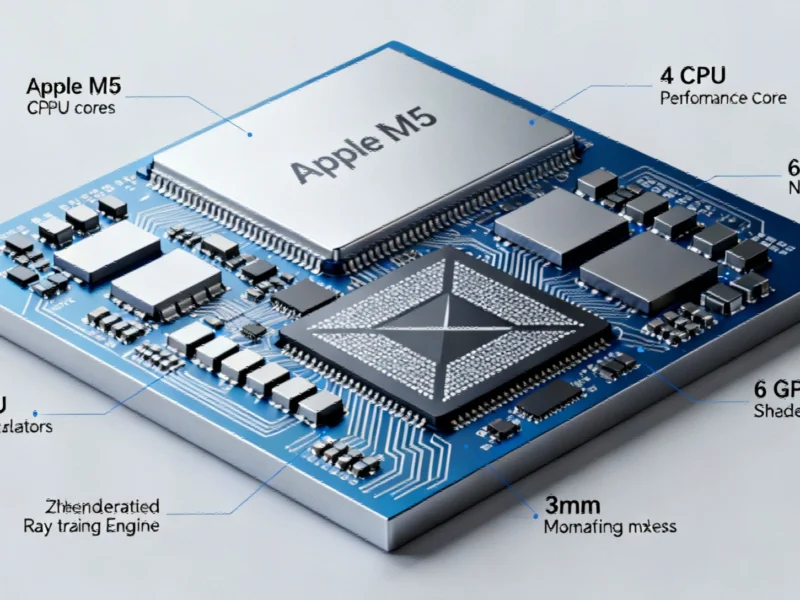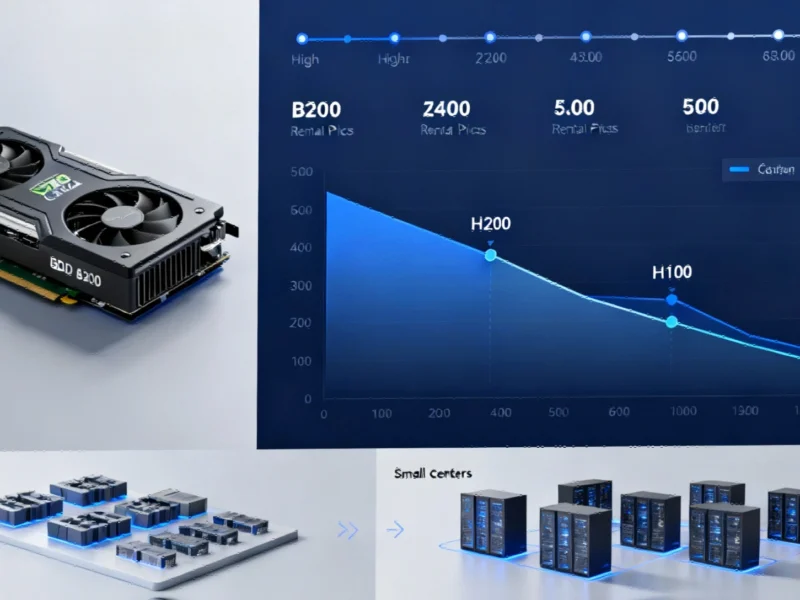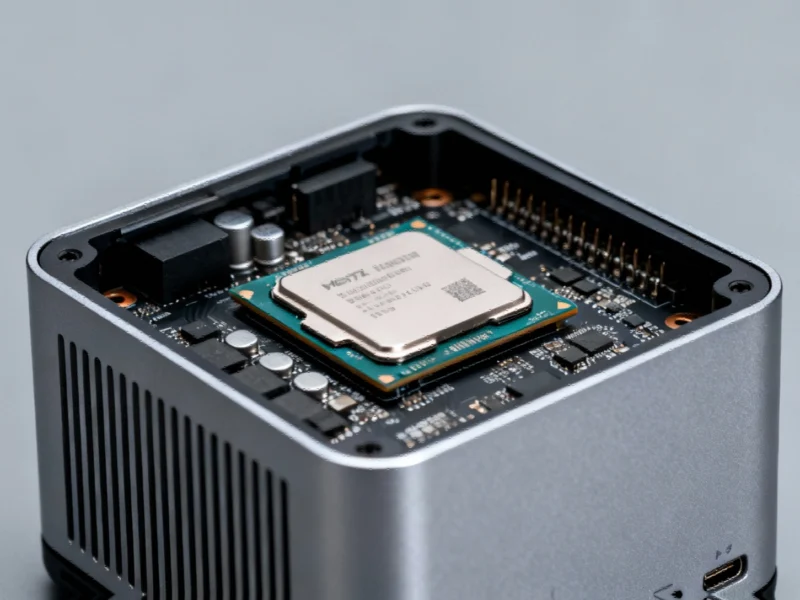In a landmark announcement that signals Apple’s deepening commitment to artificial intelligence integration, the technology giant has unveiled its groundbreaking M5 system-on-chip featuring unprecedented AI performance gains alongside substantial CPU and GPU improvements. This strategic silicon evolution comes as Apple positions its custom processors at the forefront of the AI computing revolution, challenging traditional computing paradigms with specialized neural architecture.
Advanced Manufacturing Meets Architectural Innovation
Fabricated using an enhanced 3-nanometer process technology, the M5 represents Apple’s most sophisticated chip design to date. The company claims this manufacturing advancement enables higher transistor density and improved power efficiency while delivering what Apple describes as the “world’s fastest performance core” in mobile computing. This achievement comes during a period of significant technological transitions across multiple industries, mirroring the broader industrial sector’s race toward next-generation manufacturing capabilities.
Balanced CPU Architecture With Strategic Performance Focus
The M5 features a 10-core CPU configuration comprising four high-performance cores and six efficiency cores, delivering what Apple claims is a 15% improvement in multi-threaded performance over the M4 predecessor. Interestingly, despite boasting the industry’s fastest performance cores, Apple’s presentation placed greater emphasis on the chip’s AI and graphics capabilities, suggesting a strategic pivot toward specialized computing workloads that align with emerging market demands.
Revolutionary GPU Design With Integrated Neural Accelerators
Perhaps the most significant architectural innovation lies in the M5’s completely reimagined GPU, which features 10 cores each equipped with dedicated neural accelerators. This integration enables what Apple describes as a 4x improvement in GPU compute performance compared to the M4, and an astonishing 6x peak GPU compute enhancement for AI workloads versus the M1 chip. The GPU also delivers up to 30% faster performance in traditional graphics tasks and incorporates a third-generation ray tracing engine that boosts performance in ray-traced applications by up to 45%.
“Combined with rearchitected second-generation dynamic caching, the GPU provides smoother gameplay, more realistic visuals in 3D applications, and faster rendering times for complex graphics projects,” Apple stated in its technical documentation. This graphics performance leap represents one of the most substantial generational improvements in Apple’s silicon history, positioning the M5 as a serious contender in professional creative and gaming applications.
Comprehensive AI Optimization Across All Components
The M5’s AI capabilities extend beyond the GPU, with the 16-core Neural Engine receiving significant speed enhancements despite maintaining the same core count. When combined with the neural accelerators distributed throughout the CPU and GPU cores, plus a nearly 30% increase in unified memory bandwidth to 153GB/s, the chip delivers what Apple describes as a fully optimized AI computing platform. This holistic approach to AI acceleration reflects the growing importance of machine learning workloads across consumer and professional applications.
Johny Srouji, Apple’s senior vice president of Hardware Technologies, emphasized that “M5 ushers in the next big leap in AI performance for Apple silicon. With the introduction of neural accelerators in the GPU, M5 delivers a huge boost to AI workloads.” This development occurs against a backdrop of global technological competition and shifting international technology partnerships that are reshaping the semiconductor landscape.
Broader Industry Context and Implementation
The timing of Apple’s M5 introduction coincides with significant developments across the technology sector, including major organizational changes at leading research institutions like NASA’s Jet Propulsion Laboratory that are also pushing computational boundaries. Additionally, the chip’s release comes amid broader industry challenges affecting advanced research and development organizations worldwide, highlighting the competitive pressures driving innovation in high-performance computing.
Initial Device Integration and Market Impact
The first devices scheduled to receive the M5 upgrade include the 14-inch MacBook Pro, iPad Pro, and a redesigned Vision Pro, positioning Apple’s premium mobile and spatial computing products at the forefront of AI-accelerated computing. This strategic deployment underscores Apple’s focus on bringing advanced AI capabilities to professional creative workflows, mobile productivity, and emerging spatial computing applications.
Industry analysts suggest that the M5’s specialized AI architecture could redefine expectations for on-device machine learning performance, potentially reducing dependency on cloud-based AI services while enhancing privacy and responsiveness. As Apple continues to vertically integrate its silicon design with its software ecosystem, the M5 represents a significant milestone in the company’s long-term strategy to deliver differentiated computing experiences through custom hardware-software integration.
Based on reporting by {‘uri’: ‘hothardware.com’, ‘dataType’: ‘news’, ‘title’: ‘HotHardware’, ‘description’: ‘HotHardware is your trusted source for technology news and expert reviews of computers, PC components, laptops, tablets, smartphones and gadgets for enthusiasts, consumers, gamers and IT pros’, ‘location’: {‘type’: ‘place’, ‘geoNamesId’: ‘4930956’, ‘label’: {‘eng’: ‘Boston’}, ‘population’: 617594, ‘lat’: 42.35843, ‘long’: -71.05977, ‘country’: {‘type’: ‘country’, ‘geoNamesId’: ‘6252001’, ‘label’: {‘eng’: ‘United States’}, ‘population’: 310232863, ‘lat’: 39.76, ‘long’: -98.5, ‘area’: 9629091, ‘continent’: ‘Noth America’}}, ‘locationValidated’: False, ‘ranking’: {‘importanceRank’: 338734, ‘alexaGlobalRank’: 57783, ‘alexaCountryRank’: 28985}}. This article aggregates information from publicly available sources. All trademarks and copyrights belong to their respective owners.



